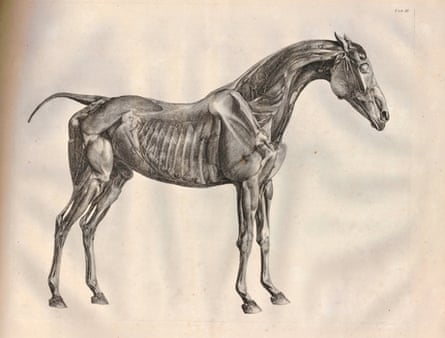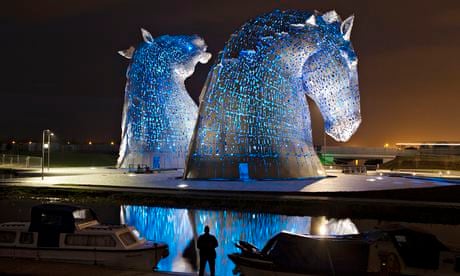Scotland has unveiled the latest misbegotten "masterpiece" of public art. It is big. It is bold. And it is rotten.
Glasgow's Andy Scott is the artist responsible for the Kelpies, a sculpture of colossal Clydesdale horse heads that tower 30 metres over Helix Park, Falkirk, near the M9 motorway. What for? For "regeneration", of course. It is claimed the £5m, 300-tonne sculptures will bring in £1.5m a year through guided tours – providing enough people mistake them for a worthwhile work of art.
Leonardo da Vinci once planned to build a colossal bronze horse, but he put imagination and vision into it. He never finished the work, and yet his exquisitely illustrated notes for this unrealised dream statue stimulate the mind. The Kelpies are merely banal and obvious.
It is unfair to compare any artist with Leonardo, but imposing your work on the landscape on this scale suggests you may be lacking in modesty. Scott's horses are neither well observed nor powerfully imagined – they are simply stale equine symbols. Without the precision and originality of Leonardo's obsessive studies of the anatomy and movement of the horse, or similar depictions of equine truth by the likes of Degas or the 18th-century artist George Stubbs, what's the point of portraying horses? The Kelpies is just a kitsch exercise in art "for the people", carefully stripped of difficulty, controversy and meaning.

Does such a bland sculpture even deserve to be called art? It is no longer enough to use the term for something that merely mimics ancient conventions. From Picasso's screaming horse to Franz Marc's wild horses, the 20th century took apart this creature as it took apart everything in nature. To return to them today, artists need fresh eyes.
Figurative art, of course, is not dead. The painter Lucian Freud showed that a figurative depiction of a horse can still be a powerful work of art. That's because he looked at horses with the same clear eye that he cast on people. The honest, perceptive work of an artist such as Freud still shows the poetry of the real world that the old masters did. But so often, when contemporary artists claim to be figurative, all they offer is a tame, unobservant cliche of what "proper" art is supposed to look like. Bad imitations of ageless masterpieces merely reveal how many artistic skills we have lost – hence some of the awful bronze statues you can see around Britain of kissing couples and soccer stars. Hence the Kelpies.
I feel like crying that someone spent £5m on this piece of trash. Imagine the boost that bounty might have given to Falkirk's public libraries. Instead, school kids will bussed to a park to gaze on brainless dreck.
We think we live in an artistic golden age, but these will be our monuments: towering inanities the Victorians would have blushed to build.

Comments (…)
Sign in or create your Guardian account to join the discussion